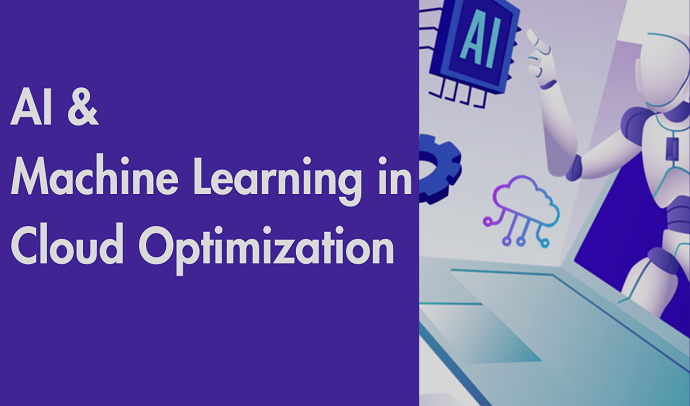Download PDF
Introduction
The era of cloud computing has transformed the way businesses manage their IT infrastructure. With the advent of artificial intelligence (AI) and machine learning (ML), cloud optimization has reached new heights by leveraging predictive analytics. In this blog post, we will delve into the fascinating realm of AI and ML-driven cloud optimization, exploring how these technologies are revolutionizing resource management for businesses in pursuit of efficiency and cost savings.

The Evolution of Cloud Optimization
Traditionally, cloud optimization involved manual adjustments and periodic reviews of resource usage. This reactive approach often led to overprovisioning, underutilization, and increased costs. Enter AI and ML – these technologies have revolutionized cloud optimization by introducing proactive, data-driven solutions that can anticipate resource needs and adapt in real-time.
Predictive Analytics: The Heart of Cloud Optimization
Predictive analytics is the practice of using historical data and statistical algorithms to forecast future trends and outcomes. In the context of cloud optimization, predictive analytics relies on AI and ML algorithms to analyze vast amounts of data and make intelligent predictions about resource usage patterns.
Benefits of AI and ML in Cloud Optimization
- Precise Resource Allocation: AI and ML models can analyze historical usage data and predict future resource requirements This enables businesses to allocate resources optimally, preventing both overprovisioning and underutilization.
- Cost Savings: By accurately predicting resource needs, businesses can avoid unnecessary expenses associated with This leads to significant cost savings over time.
- Improved Performance: Predictive analytics can anticipate spikes in resource demand, ensuring that applications run smoothly even during peak usage
- Enhanced Scalability: AI-driven predictions enable businesses to scale resources up or down in anticipation of demand changes, ensuring seamless
- Efficient Workload Management: ML algorithms can categorize workloads based on their resource requirements and allocate resources accordingly, ensuring each workload receives what it
Real-World Applications
- Auto-Scaling: AI-driven auto-scaling adjusts the number of resources allocated to an application based on real-time demand, optimizing performance without manual
- Anomaly Detection: ML algorithms can identify abnormal usage patterns, potentially indicating security breaches, resource wastage, or performance issues

3. Capacity Planning: Predictive analytics can guide capacity planning efforts by providing insights into future resource needs, enabling informed decisions about infrastructure
4. Cost Prediction and Management: AI can forecast cloud costs based on usage patterns, allowing businesses to plan budgets more
Challenges and Considerations
While AI and ML offer remarkable benefits for cloud optimization, there are challenges to overcome:
- Data Quality: Accurate predictions depend on high-quality Inaccurate or incomplete data can lead to flawed predictions.
- Algorithm Complexity: Developing and maintaining advanced AI and ML algorithms requires specialized
- Model Training: ML models need to be trained using historical data, and continuous updates are necessary to ensure
- Resource Consumption: Implementing AI and ML models consumes resources Striking a balance between optimizing resources and consuming resources for optimization is essential.

Conclusion
 In the realm of cloud optimization, AI and ML-driven predictive analytics are revolutionizing resource management. This is where CloudOpty is pivotal, offering advanced monitoring fueled by AI and ML. They empower businesses with actionable insights for resource allocation, cost savings, and performance. By embracing CloudOpty, you tap into AI’s potential, ensuring your business leads in efficiency and innovation in the dynamic cloud landscape.
In the realm of cloud optimization, AI and ML-driven predictive analytics are revolutionizing resource management. This is where CloudOpty is pivotal, offering advanced monitoring fueled by AI and ML. They empower businesses with actionable insights for resource allocation, cost savings, and performance. By embracing CloudOpty, you tap into AI’s potential, ensuring your business leads in efficiency and innovation in the dynamic cloud landscape.
